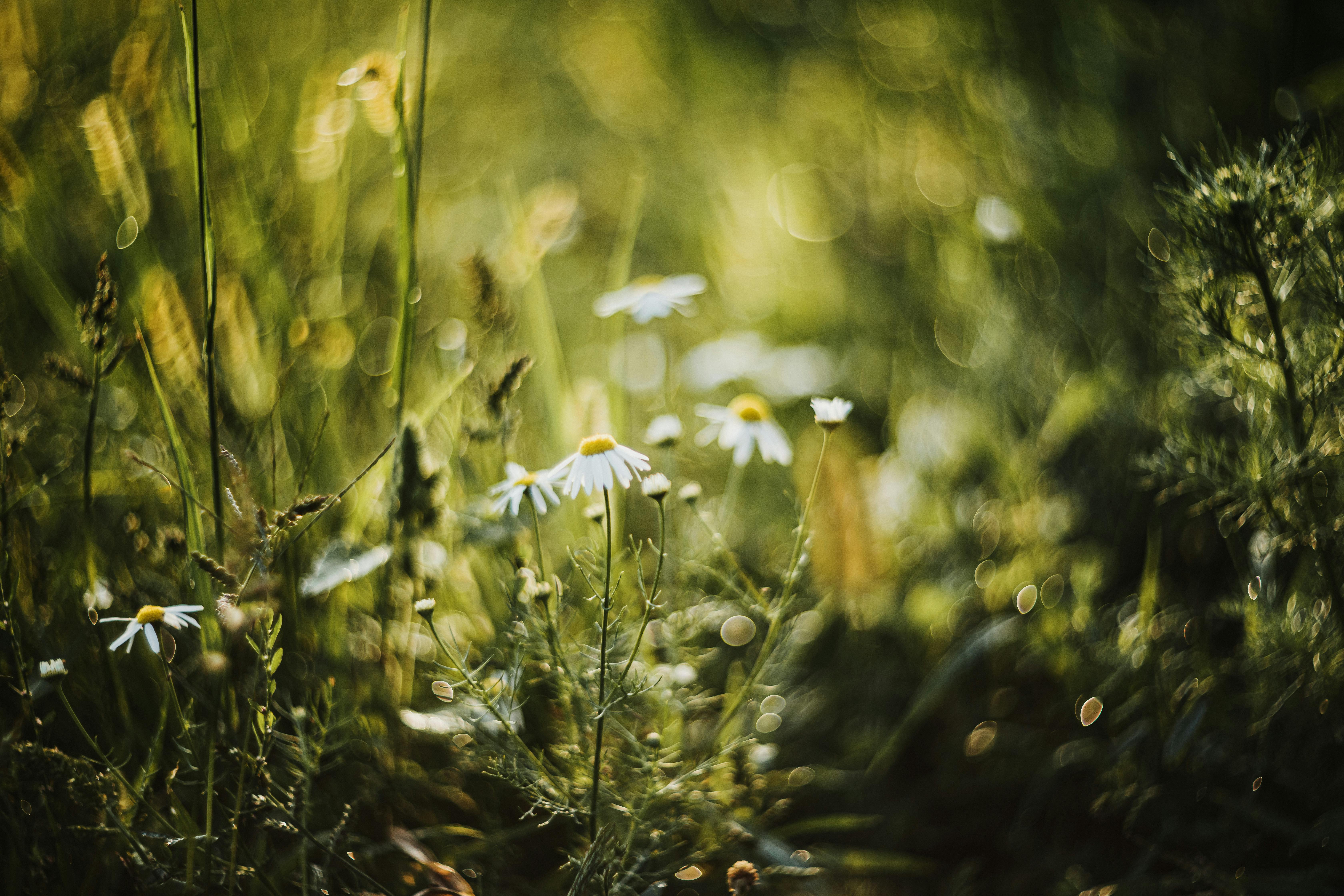
Are you struggling to keep those pesky weeds at bay in your greenhouse? Well, worry no more! In this article, we will explore some highly effective methods to control weeds in your greenhouse, ensuring that your plants thrive without any unwanted competition. Whether you are a seasoned gardener or just starting out, these methods are simple to implement and will help you create a weed-free environment for your precious plants. So, let’s roll up our sleeves and get ready to tackle those unsightly intruders!

This image is property of images.pexels.com.
Physical Weed Control Methods
Hand Pulling
Hand pulling is a simple and effective way to control weeds in your greenhouse. It involves physically pulling out the weeds by hand, roots and all. This method is best suited for smaller infestations or areas where other control methods may damage valuable plants. When hand pulling, be sure to remove the entire weed, including the roots, to prevent regrowth. It’s important to wear gloves while hand pulling to protect your hands from thorns or prickly weeds.
Mechanical Cultivation
Mechanical cultivation involves using tools or machinery to physically uproot or bury weeds. This method can be effective for larger infestations or areas where hand pulling is not feasible. Tools like hoes or cultivators can be used to chop off or uproot weeds, while machinery such as rotary tillers can be used to till the soil and bury weed seeds. Mechanical cultivation should be done carefully to avoid damaging desired plants. Regular monitoring is essential to ensure early detection and timely control of weeds.
Flame Weeding
Flame weeding, also known as thermal weeding, is a weed control method that uses intense heat to destroy weeds. This method involves using propane burners or infrared heat sources to heat up the weeds, causing their cells to burst and resulting in their death. Flame weeding is best suited for annual weeds that are close to the ground. It is essential to exercise caution while using flame weeding, as the heat can also damage desired plants. This method is recommended for experienced gardeners or professionals.
Chemical Weed Control Methods
Pre-Emergent Herbicides
Pre-emergent herbicides are chemicals that are applied to the soil before weed seeds germinate. These herbicides create a barrier in the soil that prevents the growth of newly germinated weeds. They are effective in controlling annual weeds and can be applied before planting or directly after planting. It’s important to follow the label instructions when using pre-emergent herbicides and avoid applying them near desired plants to prevent damage.
Post-Emergent Herbicides
Post-emergent herbicides are chemicals that are applied to actively growing weeds. These herbicides target existing weeds and can be selective or non-selective. Selective post-emergent herbicides target specific types of weeds, while non-selective herbicides kill all vegetation they come into contact with. It’s crucial to read and follow the instructions on the herbicide label, as some post-emergent herbicides can be harmful to certain plants.
Selective Herbicides
Selective herbicides are a specific type of post-emergent herbicide that target specific types of weeds while not harming desired plants. They are designed to control a particular group of weeds based on their characteristics, such as broadleaf or grassy weeds. Selective herbicides must be used with caution and in accordance with the label instructions to minimize the risk of damage to desirable plants.
Biological Weed Control Methods
Introduction of Beneficial Insects
Biological control involves using natural enemies, such as beneficial insects, to manage weed populations. Some insects feed on weed seeds, while others attack the foliage or roots of weeds. Introducing these beneficial insects into your greenhouse can help reduce weed infestations. Ladybugs, lacewings, and certain types of beetles are examples of beneficial insects that can help control weeds. However, it is important to carefully research and identify the beneficial insects suitable for your greenhouse environment to ensure they do not become pests themselves.
Use of Weed-Suppressing Plants
Weed-suppressing plants, also known as cover crops or living mulches, are plants that are grown specifically to inhibit the growth of weeds. These plants can shade the soil, reducing the amount of sunlight available to weeds, and also compete for nutrients and water. Some examples of weed-suppressing plants include clover, buckwheat, and ryegrass. It’s important to choose plants that are compatible with your desired crops and to properly manage them to prevent them from becoming invasive.
Cultural Weed Control Methods
Proper Sanitation Practices
Proper sanitation practices play a crucial role in weed control. Regularly cleaning tools, equipment, and potting materials prevents the spread of weed seeds and plant debris. It’s important to remove any weeds or weed seeds from pots, trays, and containers before reusing them. Additionally, practicing good hygiene by washing hands and changing clothes when moving between different areas of the greenhouse can help prevent the introduction and spread of weeds.
Mulching
Mulching is the process of covering the soil around plants with a layer of organic or inorganic materials, such as straw, wood chips, or plastic. Mulch acts as a barrier, preventing weed seeds from germinating and emerging from the soil. Mulching also helps regulate soil temperature, retain moisture, and improve overall soil health. It’s important to choose the appropriate type and thickness of mulch for your greenhouse crops and regularly monitor and maintain the mulch layer to ensure its effectiveness.
Regular Crop Rotation
Regularly rotating crops in your greenhouse can help disrupt weed growth and reduce weed pressure. Weed species often have specific preferences for certain crops, and by rotating crops, you make the environment less favorable for these weeds. Crop rotation also helps break pest and disease cycles, improving overall plant health. It’s important to plan crop rotations carefully, considering the specific growth requirements of each crop and selecting crops that are not susceptible to the same weeds.

This image is property of images.pexels.com.
Irrigation Management
Drip Irrigation
Drip irrigation is a method of providing water directly to the plant roots, minimizing water loss through evaporation and reducing weed growth. By delivering water directly to the root zone, drip irrigation helps ensure that only the desired plants receive moisture, limiting the availability of water to weeds. This method can be especially beneficial in greenhouse settings, where water conservation and targeted irrigation are essential. Regular monitoring of the system and maintenance of drip emitters is necessary to ensure proper functioning.
Avoiding Overhead Watering
Overhead watering, such as sprinkler irrigation, can contribute to weed growth by providing moisture to both desired plants and weeds. To minimize weed growth, it is recommended to avoid overhead watering whenever possible in the greenhouse. Instead, focus on methods like drip irrigation or hand watering directly to the root zone of plants. By avoiding overhead watering, you can better control the moisture levels and reduce weed establishment and growth.
UV Radiation
Use of UV Reflective Films
UV reflective films are a form of physical barrier that can be used in greenhouses to reduce weed growth. These films reflect UV radiation back onto the plants and weeds, inhibiting their growth. By disrupting the light wavelengths that are necessary for plant photosynthesis, UV reflective films can help suppress weed growth without the use of chemicals. It’s important to choose the appropriate film for your greenhouse, considering factors such as light transmission, durability, and compatibility with your crops.
UV Sterilization
UV sterilization involves using ultraviolet light to eliminate or reduce pathogens and weed seeds in the greenhouse environment. UV light at specific wavelengths damages the DNA of microorganisms and weed seeds, preventing their ability to reproduce. UV sterilization can be employed in various ways, such as through portable UV units or fixed installations. It’s important to follow safety guidelines and manufacturer recommendations when using UV sterilization to ensure its effectiveness and protect yourself from harmful exposure.

This image is property of images.pexels.com.
Soil Solarization
Covering Soil with Clear Plastic Sheets
Soil solarization is a method that utilizes solar heat to control weeds and suppress soil-borne pests and diseases. This technique involves covering the soil with clear plastic sheets, which trap heat and create high temperatures in the upper layers of the soil. The heat generated during solarization can kill weed seeds, pathogens, and nematodes, reducing their populations. For effective soil solarization, the plastic sheets should be left in place for several weeks during the hottest months of the year.
Utilizing Solar Heat to Kill Weed Seeds
Apart from soil solarization, utilizing solar heat to kill weed seeds can be achieved by exposing them to direct sunlight and high temperatures. This can be done by spreading harvested weed debris or weed seeds on a clean and clear area in the greenhouse. Regularly turning and flipping the weed debris or seeds will expose them to more sunlight and heat, effectively killing the weed seeds. It’s important to ensure that the weed seeds or debris are properly discarded afterward to prevent reinfestation.
The Use of Steam
Steam Sterilization
Steam sterilization is a technique that uses high-temperature steam to kill pathogens, pests, and weed seeds present in the soil. This method involves injecting steam into the soil through specially designed equipment. The high temperatures generated by the steam effectively destroy the cellular structure of weeds, preventing their growth. Steam sterilization can be an efficient and environmentally friendly method, but it requires specialized equipment and careful control to avoid damaging desired plants.
Weed Seed Burial
Weed seed burial, also known as seed bank depletion, is a cultural weed control method that involves burying weed seeds deeply in the soil. By burying weed seeds at depths where they are unlikely to germinate, their viability is significantly reduced, effectively depleting the seed bank over time. The optimal burial depth can vary depending on the weed species, but a general guideline is to bury seeds at least 4-6 inches deep. This method requires regular monitoring and maintenance to ensure new weed seeds do not accumulate near the soil surface.

Integrated Weed Management
Combination of Multiple Methods
Integrated weed management (IWM) involves the strategic and simultaneous use of multiple weed control methods to achieve effective and sustainable weed control. By combining different methods, such as physical, chemical, biological, and cultural controls, the strengths of each method can be maximized while minimizing their weaknesses. For example, using mechanical cultivation to remove large weeds followed by the application of post-emergent herbicides can provide more comprehensive control. Regular monitoring and evaluation are crucial in an IWM approach to adjust control methods based on weed populations and environmental conditions.
Regular Monitoring and Evaluation
Regular monitoring and evaluation are essential components of effective weed control in a greenhouse. By regularly inspecting the greenhouse, you can identify weed species, detect early signs of weed infestation, and assess the effectiveness of control measures. Monitoring can be done visually, through inspection of plants and soil, or by using tools such as weed heat units or weed seed bank analysis. Based on the monitoring results, adjustments can be made to control methods and new strategies implemented to prevent or manage weed outbreaks effectively.
Preventative Measures
Introducing Clean Seeds and Planting Material
Prevention is always better than cure when it comes to weed control in a greenhouse. Introducing clean and weed-free seeds and planting material is crucial to minimize the risk of weed establishment. Ensure that the seeds and planting material you source are certified and free from weed seeds or contamination. Proper cleaning and disinfection of pots, trays, and tools before use can also prevent the introduction of weed seeds into your greenhouse environment. Taking these preventative measures significantly reduces the weed pressure and the need for extensive weed control measures.
Implementing Proper Quarantine Procedures
Implementing proper quarantine procedures is vital to prevent the introduction and spread of weeds in your greenhouse. Before bringing in new plants or materials, isolate them in a designated quarantine area to monitor for any signs of pest or weed infestation. This allows you to detect and address any issues before introducing them into your main greenhouse. Additionally, ensure that any new plants or materials are sourced from reputable sources that follow strict sanitation and inspection protocols. By implementing proper quarantine procedures, you can protect your greenhouse from potential weed infestations and maintain a healthy growing environment.


